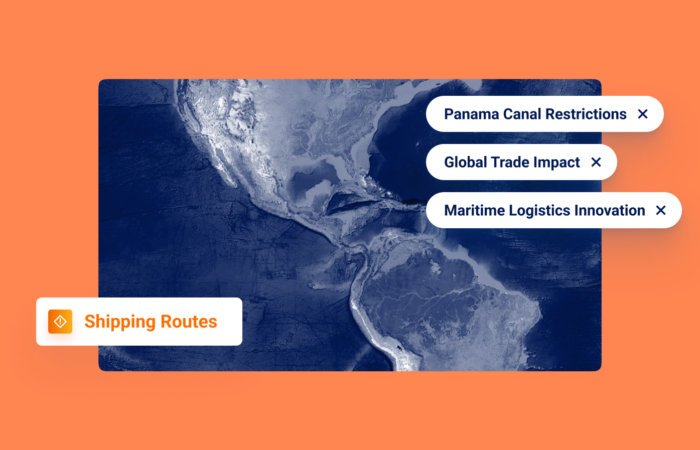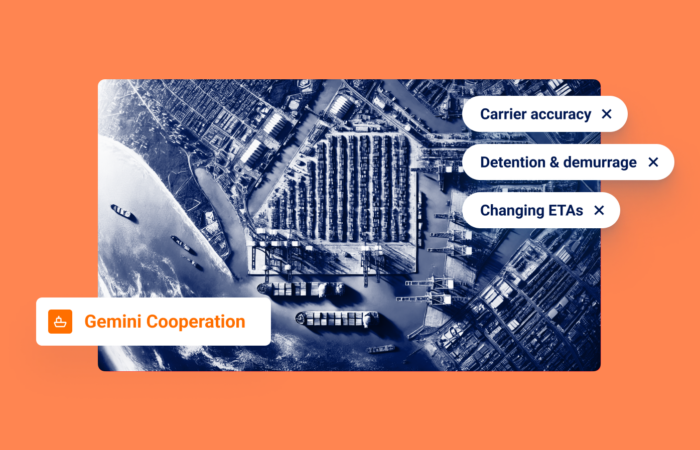Maritime AI comes to container shipping

What’s inside?
According to the World Economic Forum, world trade is estimated at 14 trillion dollars, 90% of which is transported by sea. Approximately seven to nine trillion of this trade is transported via the 400 million containers or so handled in terminals around the world.
Since Covid-19 hit, ocean freight rates have never been higher – up 1,500% over the last two years. Concurrently, ocean liners’ reliability has never been lower, with a mere 30% – 40% rate of on-time arrival. The Federal Reserve has even identified these supply chain issues as a primary driver of inflation – currently at a 30 year high in the US and UK.
This crisis is the sum of an amalgamation of factors. For starters, gaps in manufacturing have yielded a shortage of critical materials. Recent chip shortages, for instance, have hindered every IoT-based industry from automotive to gaming. Labor itself has also seen detrimental shortages – companies are showering their workers with perks just to mitigate turnover. Logistically speaking, port congestion and disorganized transportation systems have compounded these shortages. All too often, trucks and vessels end up in the wrong place and waste precious delivery time waiting for the next supply chain link to take over.
Though these issues are largely temporary, there’s one trend that won’t fade – people are simply buying more and expecting more from their service providers.
Generalized solution vs. best of breed
There are more than 250,000 organizations in the world engaged in containerised trade: Beneficial Cargo Owners who own the cargo (e.g., Ikea, Nike); Liners which ship the cargos (e.g., Maersk, MSC); Terminal operators who handle the cargo (e.g., DP World) – – and freight forwarders which are effectively the connected tissue of this industry.
These groups are effectively divided into two: The exclusively shipping companies (container lines, container terminals) and the multimodal ones (BCOs and Freight Forwarders). According to Gartner, 50% of the product-focused companies will invest in a Real-Time Transportation Visibility Solution.
From a customer perspective, when addressing the visibility and predictability challenges, you have two main approaches: The first is to adopt a generalized solution, partner with a company that can offer you an end-to-end visibility solution. The pros are clear- one vendor, one solution, connecting the dots.
However, speaking with hundreds of logistics companies shows a different picture: none of the ocean professionals we talked to felt content with the products and services they were buying and using. They mainly felt it’s a positive step in the right direction but that it lacks both nuances relevant to the domain as well as predictive capabilities.
There could be an alternative: Some domains are so complex and require more domain expertise and focus – a “best of breed” approach.
Introducing: Windward Ocean Freight Visibility
For the past 18 months, our teams have been hard at work taking our Maritime AI to the world of container shipping: Mapping terminals, gathering data, building AI models, connecting the dots. We’ve been working shoulder to shoulder with some of the world’s leading logistics companies in our mission to bring an innovative solution to the supply chain.
We can now provide state-of-the-art technology to what we believe is an underserved market. For too long, freight forwarders and cargo owners have been using manual solutions, finding themselves reactive in the face of congested ports and rising customer demands.
We are proud to be launching our Ocean Freight Visibility product today: the one place you can get best-in-class traceability and insights on your ocean shipments. Gone are the days when you rely on regurgitated data, suffer from a significantly different level of service when working with the different liners, and spend hours a day chasing lost shipments.
By choosing Windward Ocean Freight Visibility, you take back control of your business and get:
- A single source of truth
- Best in class insights
- Real-time visibility
- Critical delays alerts
It’s time to be the first to know, proactively mitigate risks, and streamline your customer service. Dwell time and demurrage charges are not set in stone and can be significantly reduced and impacted by your organization’s choices. Whether you handle 50K containers or 500K containers – you now have a digitalization partner that brings both maritime domain expertise as well as AI for your benefit.












